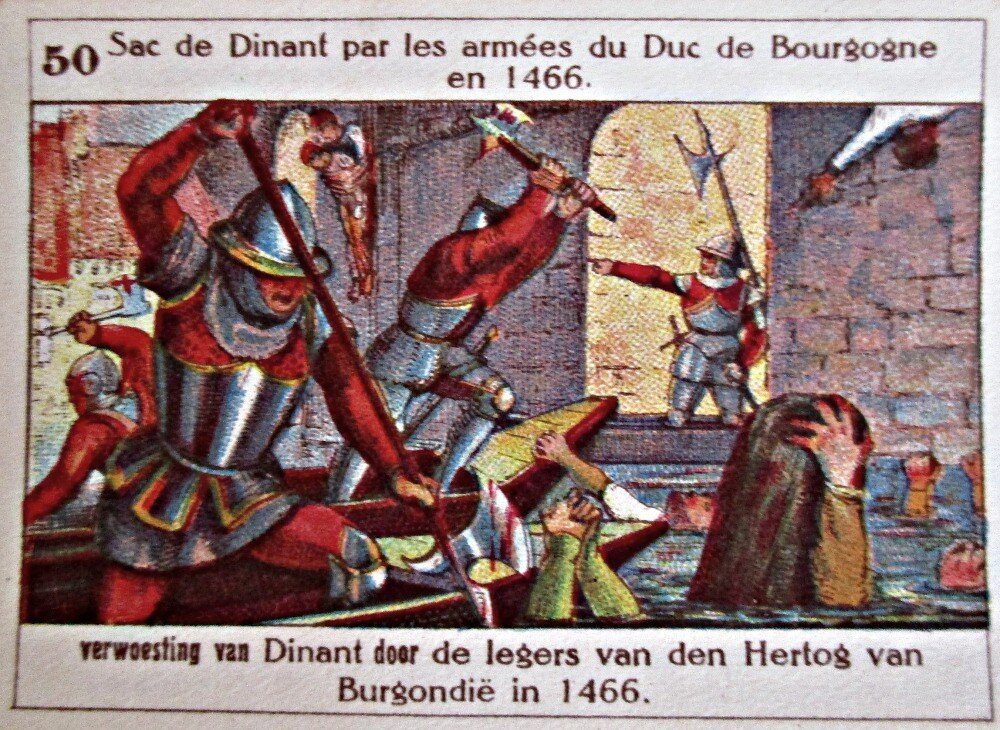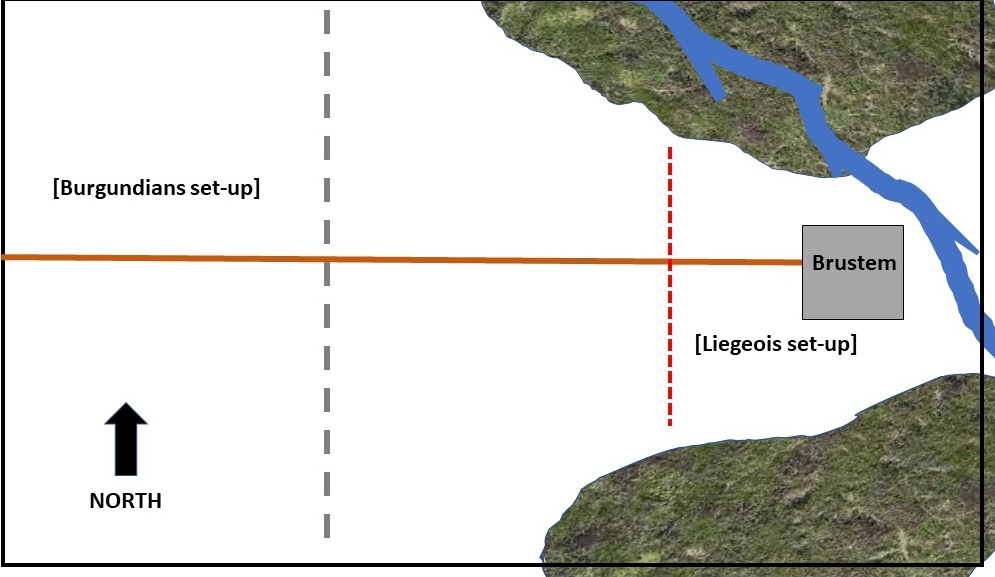Battle of Brustem, 1467
A Scenario for A Bloody Dismal Fight

The Burgundians were unpopular with the Flemish people for a reason - here is a 1950s depiction of the sack of Dinant, burnt to the ground as a punishment.

The Burgundians were unpopular with the Flemish people for a reason - here is a 1950s depiction of the sack of Dinant, burnt to the ground as a punishment.
In October of 1467, the Prince-Bishopric of Liege was again in rebellion against Charles the Bold, the new ruler of Burgundy after his father, Philip, died earlier that year. On Philip's death, the inhabitants of the city had risen in rebellion and chased out the much-hated Prince-Bishop Louis de Bourbon, basing their hopes on promises of French support. This conflict became known as the Second Liege War, and is described in some detail in Philippe de Commines' Memoires. Commines was a participant in the battle, working at that time for Charles of Burgundy (although he later became a follower of the French Kings).
Charles has amassed a large force, and was besieging the city, when Raes van Heers, supported by his wife Pentecote d'Arkel and Jean de Wilde, the Lord of Kessenich, led an army to its relief. His army was largely composed of the local citizenry - among them the famed pikemen of the region - but he had the support also of a contingent of French archers and men-at-arms. He deployed in a marshy area around the town of Brustem, in a defensive position defended by a trench.
After defeating the Burgundian vanguard, and killing many of the Burgundian archers, the Liegeois counter-attacked against orders, exposing them to the Burgundian main battle. The Liegeois were defeated and scattered into the marsh with great slaughter.
This scenario is based directly on Phillippe de Commines' account of the battle, and reflects some features which may or may not have actually been true (according to Wikipedia, the French support for the Liegeois did not materialize - according to Commines, it did.) Consequently, it is to a large extent fictitious.
The village will provide hard cover, and is considered rough. The marshes to either side are very rough ground but do not provide cover. The river is impassable. The Liegeois have established trenches which will provide hard cover (the red dotted line). The village is the Liegeois camp - the Burgundian camp may be set up anyhere within their starting zone.

Advance Detachment (Lord of Ravenstein)
Longbows (3 bases)
Foot Knights (4 bases)
Cannons (2 bases)
Main Battle (Charles the Bold - Overall Commander +1 Command)
Foot Knights (4 bases)
Mounted Crossbowmen (2 bases Horsemen)
Crossbowmen (3 bases)
Vanguard (Lord of Cordes)
Knights (4 bases)
Longbows (3 bases)
Irregulars (4 bases)
Rear Guard (Lord of Contay)
Knights (4 bases)
Crossbowmen (3 bases)
Irregulars (4 bases)
Vanguard (Jean de Wilde)
Crossbowmen (3 bases)
Billmen (4 bases)
Irregulars (4 bases)
Rear Guard (Raes van Heers - Overall Commander)
Foot Knights (4 bases)
Communal levy (4 bases)
Center (Pentecote d'Arkel)
Pikemen (3 bases)
Communal Levy (4 bases)
Cannons (1 base)
French (François Rojet, Baillif of Lyon)
Longbowmen (3 bases)
Knights (4 bases)
The Liegeois pikemen will be considered Undisciplined (this is normally reserved for Knights), but only following an initial successful close combat with the enemy. Mounted knights may not enter the marshy areas, other than to charge enemy units on their edge. The burden of attack is on the Burgundians, and the scenario is a win for the Liegeois if the Burgundians do not break their army.